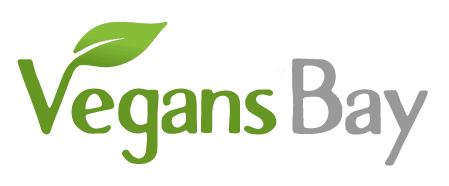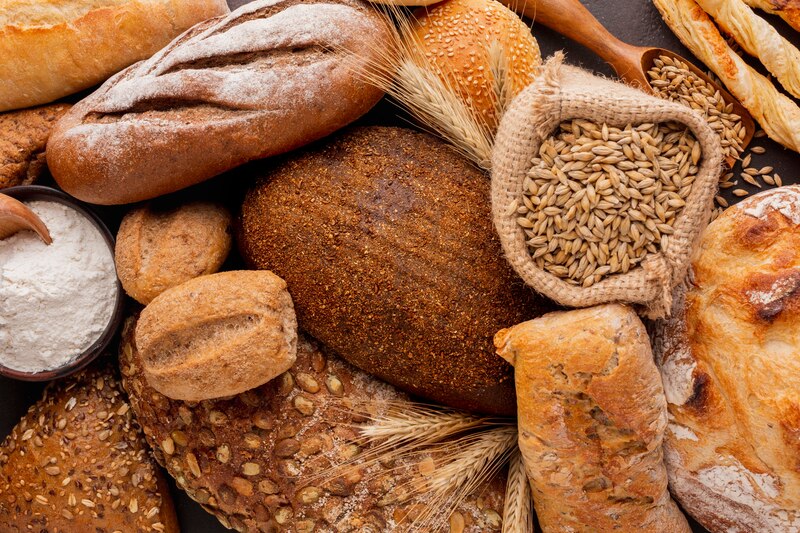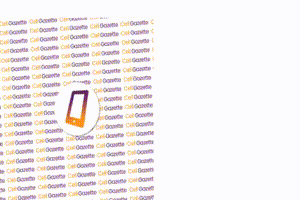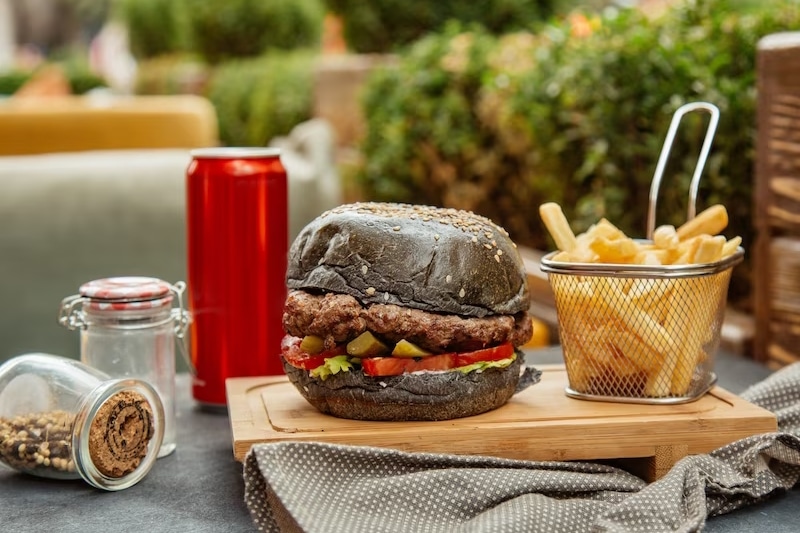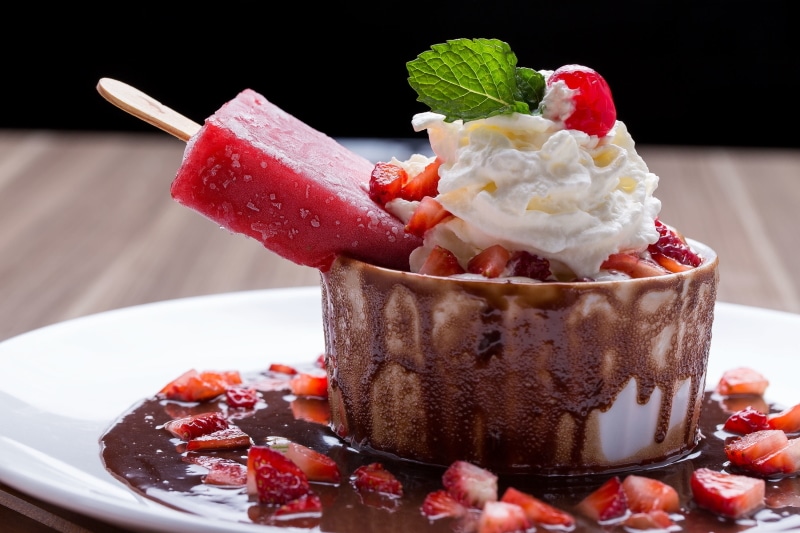Have you ever seen vegan bread? Here is a complete guide on this everyday dietary item.
Omar Khayyam, a mathematician and poet from Persia in the 10th century, once said that all he needed to live was a jug of wine and a loaf of bread. Many of us still hold on to that middle item with great affection after all these years.
On the other hand, might bread be considered vegan? Sometimes (and often! ), it is, and other times it is not.
We can’t seem to get enough of bread, whether it’s in the form of a simple sandwich at our desks or the more elaborate avocado toast.
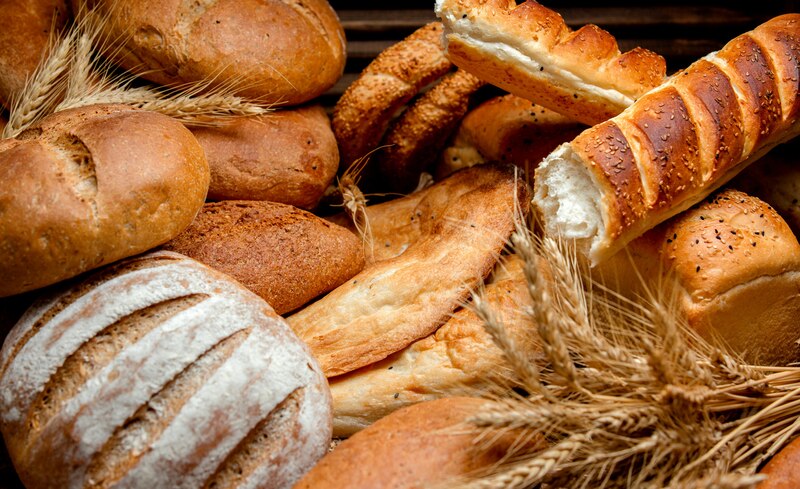
The evolution of the bread-baking process
Bread is defined as a baked good that is made from flour or a meal that has been leavened, hydrated, kneaded, and baked. Nearly 12,000 years ago, during the Neolithic period, people began making bread by combining coarsely mixed grains with water and baking it on hot stones or in hot ashes.
Even though sourdough was likely accidentally developed by the Egyptians when air and wild yeast spores set off the fermentation process in the dough, bread in some form or another can be found in virtually every culture and corner of the world, from the sour injera of Ethiopia to the crusty baguettes of France.
Many freshly baked loaves contain non-vegan ingredients, making it difficult to determine which breads are suitable for a vegan diet. We include information on the conventional ingredients of bread, as well as recommendations for vegan bread.
How healthy is bread?
Bread has been a staple of the human diet for millennia, and it continues to be so today. There’s a good reason why sharing a meal with loved ones is sometimes referred to as “breaking bread.”
Those who choose to follow a vegan diet can still enjoy bread. In its traditional form, bread often only contains a handful of easily obtainable ingredients, all of which are vegan.
Some forms of contemporary bread are made using dairy and eggs, adding a layer of complexity to the process. However, there are many alternatives to bread that are suitable for vegans.
Some bread, typically flatbreads, are unleavened, meaning they lack rising agents, while much thicker bread is leavened, employing several methods including baker’s yeast and baking soda. Besides wheat, other common grains used to make bread include teff, millet, and corn.
When it comes to nutrition, how does bread fare?
Bread’s popularity has persisted for centuries, but it has recently come under fire due to claims that it causes weight gain and other health problems and the rise of low-carb diet fads. Not all carbohydrates are the same, says dietitian Lee Crosby of the Physicians Committee for Responsible Medicine. Carbohydrates should be included in a balanced diet. Nonetheless, many places equal value on carbohydrates from Coke cans and sweet potatoes. “Decades of research show us that this is not the case; the human body reacts differently to lentils than it does to lollipops,” Crosby says.
But, in particular, what about bread?
Ninety-nine percent of Americans do not consume enough whole grains, although doing so can reduce the risk of heart disease, Type 2 diabetes, strokes, and more.
You may identify a bread that provides the many health benefits associated with eating whole grains by checking the label for the words “100% whole grain” or “whole wheat.” This is the recommendation of the Cleveland Clinic.
Bread can be included in a balanced diet if it is made without refined flour, added sugars, and other bad additives. Here, we’ll go over the many breads available and highlight some of the best choices for your health.
bread varieties
There are more varieties of bread than you might think, from soft loaves to crusty baguettes.
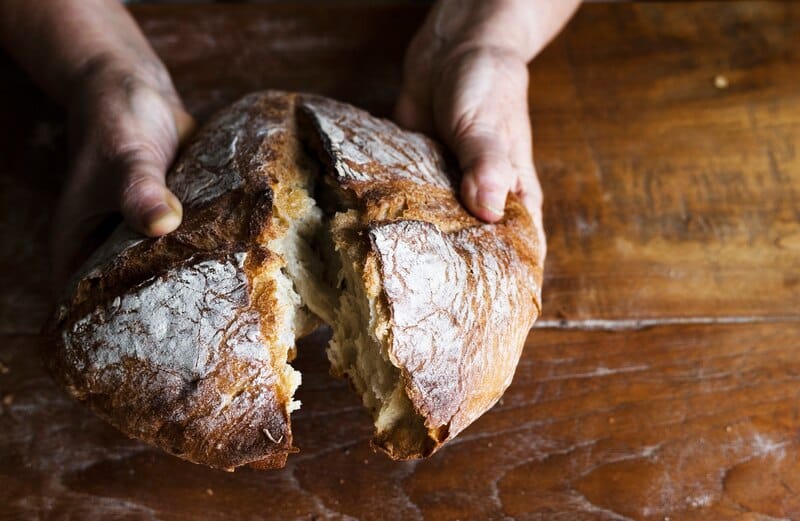
- Sourdough
Sourdough can take many forms, but it always begins with a starter made from flour and water that has been fermented. This mother, sponge, or starter can have a long history of use. The fermentation process produces bubbles and the distinctive sour taste that has made beer popular for millennia. Yeast and airborne bacteria work together to produce this fermented beverage. The natural leavening ingredient in the starter, rather than commercial yeast, gives sourdough its characteristic crisp crust.
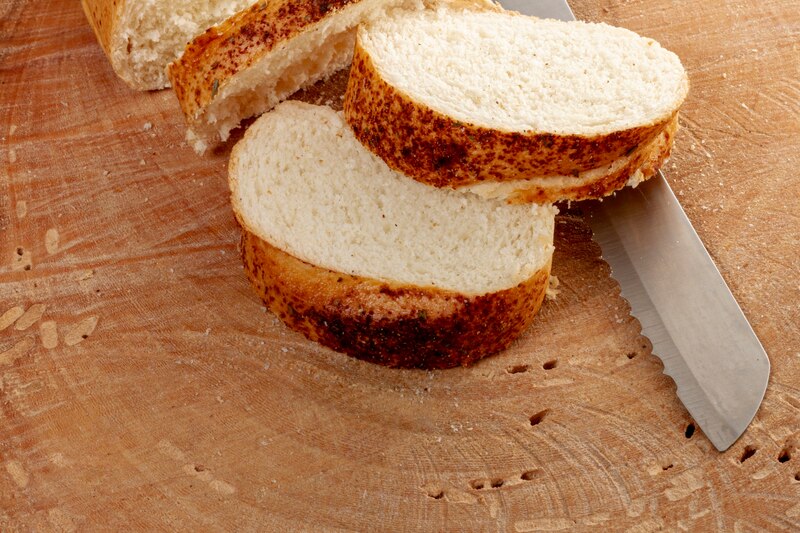
- White Bread
White bread is a blanket term for loaves, buns, bagels, and other baked goods made using flour from wheat kernels that have had their bran and germ layers removed before grinding.
White bread, which has been available since the beginning of experimenting with bread in ancient Egypt despite being lacking in fiber and nutritional content, has become synonymous with the worst parts of contemporary food systems.
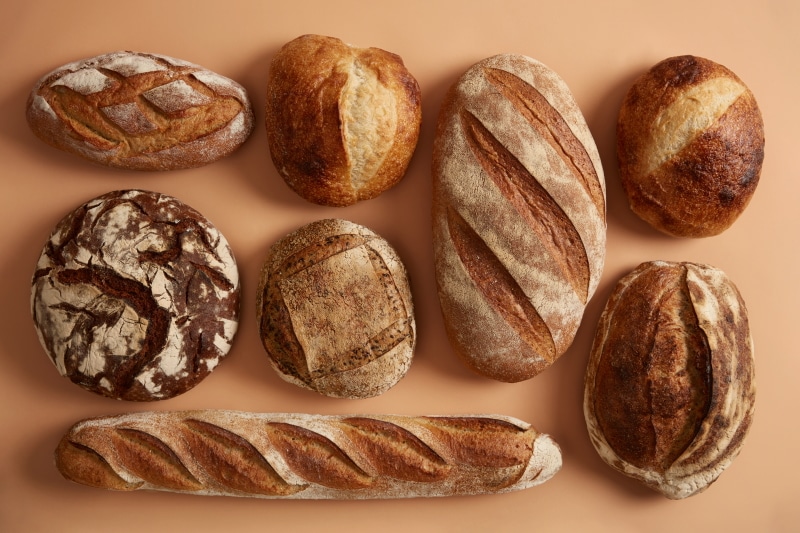
- Whole Grains
When a loaf of bread is labeled “whole grain,” it signifies the entire grain kernel was used in its production. Whole-grain wheat, oats, barley, and brown rice are all acceptable alternatives.
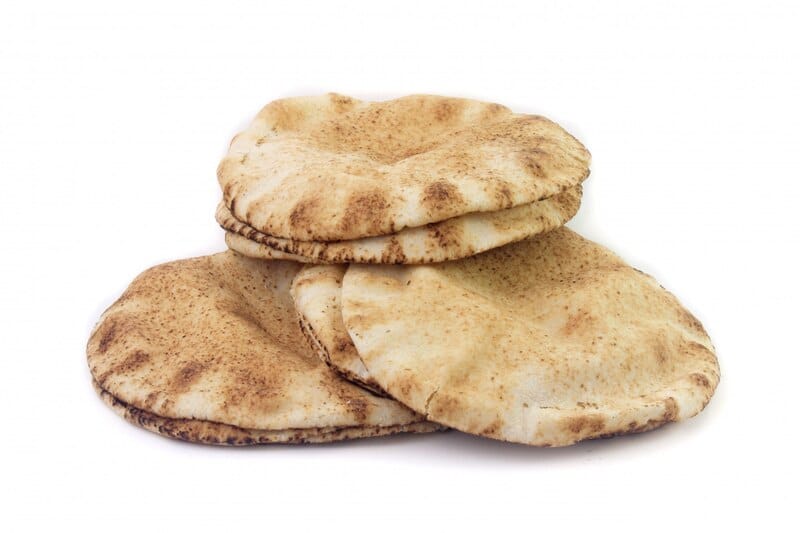
- Pita Bread
Pita bread can trace its roots back to the Middle East. Even though pita is most commonly associated with pockets, which are used to hold fillings in traditional falafel sandwiches, it can also be flat and folded around said filling.
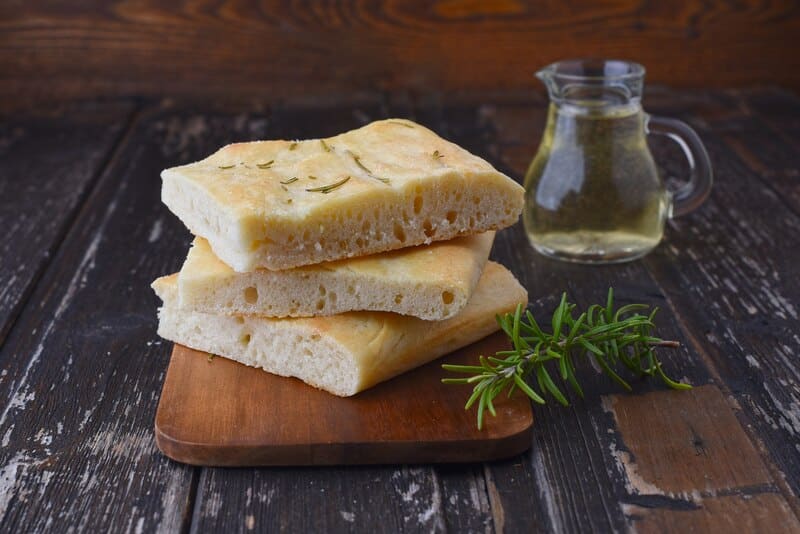
- Focaccia
Focaccia is a flat yet puffy, yeast-risen flatbread that has its origins in ancient Rome. Focaccia is sometimes used as the base for pizzas, but it is also used as sandwich bread and can be cut into a variety of forms.
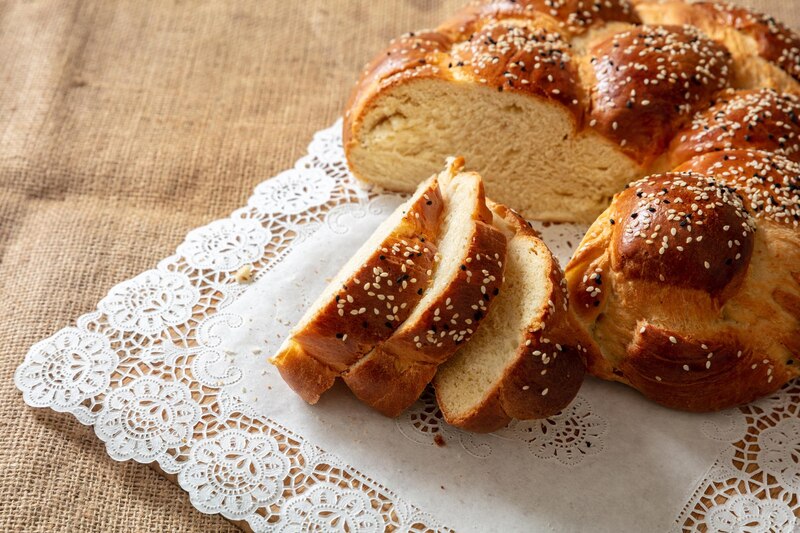
- Challah
Challah is a type of braided Jewish bread that is traditionally made with eggs but also exists in versions where water is used instead. Compared to traditional challahs made with eggs, these are a more delicate and delicately flavored option.
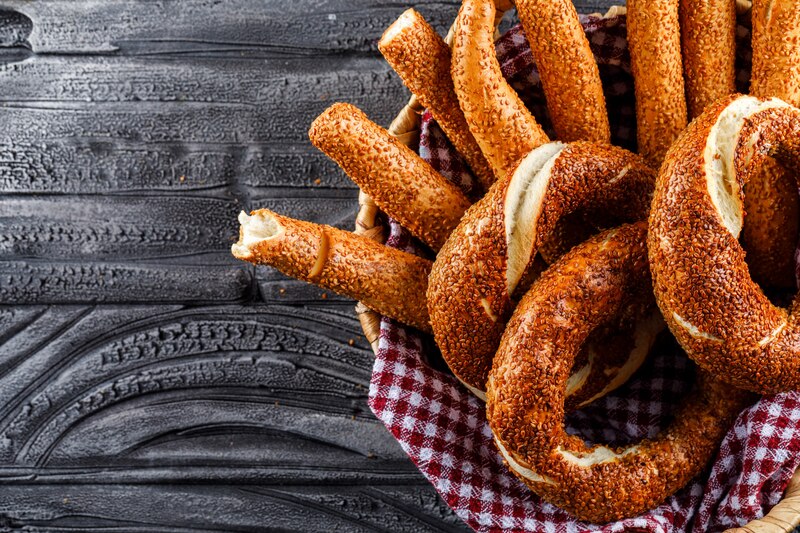
- Bagels
Bagels are a type of bread made from a yeasted dough that is formed into a ring, boiled, and then baked. Some are produced with white flour, while others use whole wheat, sprouted flour, or no flour at all.
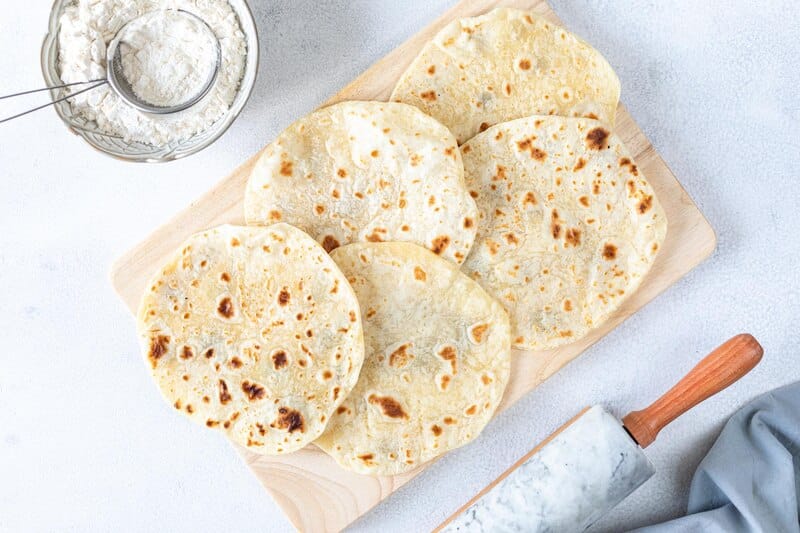
- Tortillas
Tortillas are a type of unleavened flatbread often produced in Mexico from either maize meal or wheat flour and wrapped into a circle.
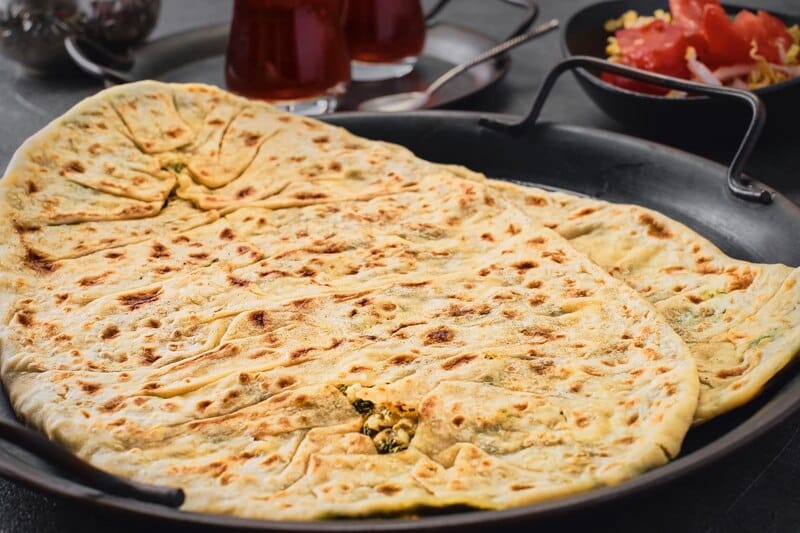
- Flatbreads
Flatbreads are the oldest form of bread, and they come in a wide variety of textures and flavors from culture to culture. It’s common to find unleavened flatbreads like tortillas, but some, like pita bread, are made with yeast.
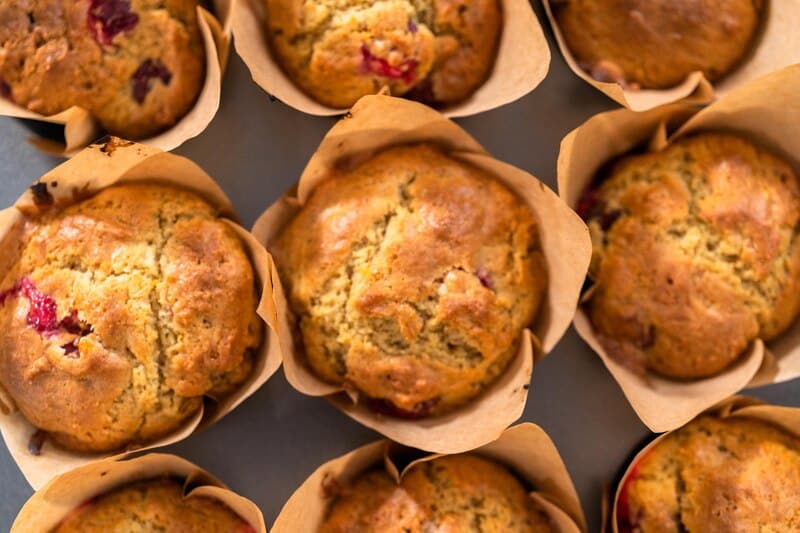
- Quick Bread
The category of bread can be made without yeast by combining baking soda and an acidic ingredient like vinegar to create carbon dioxide and cause the bread to rise. Some examples of fast bread are Irish soda bread and biscuits; these baked goods get their name because they don’t need time to rise and knead. Sweet versions of quick bread, such as banana, pumpkin, and zucchini, are also common.
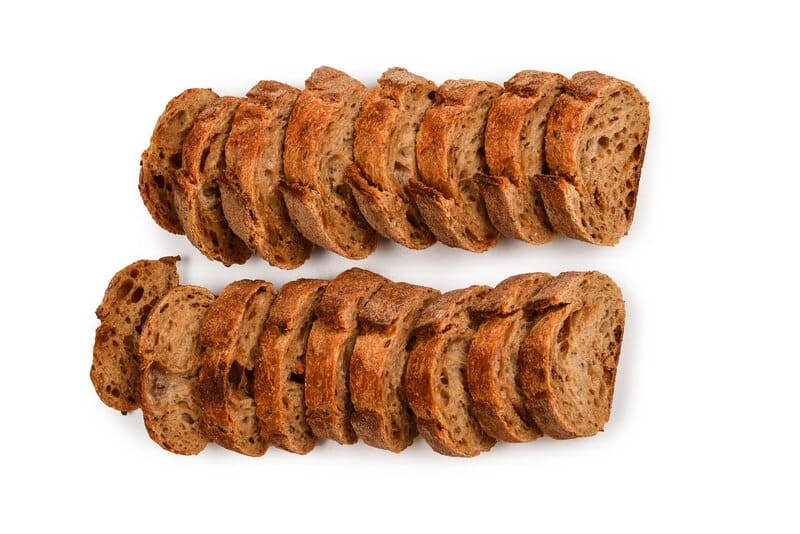
- Multi-Grain Bread
Bread made with many grains is called “multigrain,” although it differs from “whole grain” bread since it may not include the bran and germ. A lot of them have other stuff in them like sunflower seeds in addition to the oats and rye that are in there. Those looking to raise their nutrition game might benefit from the additional complex carbohydrates found in multigrain bread and buns, which are also packed with fiber.
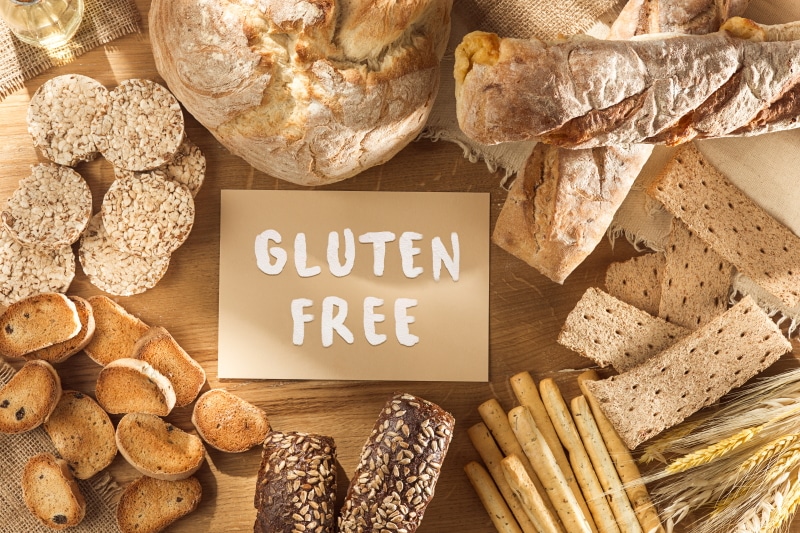
- Gluten-free Bread
Gluten-free bread is made by substituting ingredients like rice flour, almond flour, millet flour, potato starch, and more for wheat flour, barley flour, rye flour, and oats (the inclusion of oats in a gluten-free diet will depend on whether the individual has an allergy to or avoidance of gluten).
Is bread vegan?
Bread comes in a wide variety of shapes and sizes, and while most of it is vegan, some varieties may include animal products. Dairy products (not just milk, but also butter, yogurt, and whey), eggs, and honey are all examples of animal-based ingredients.
During the refining process, feathers, pig hair, or even human hair can be converted into L-cysteine, a dough conditioning addition. Emulsifiers called mono- and diglycerides are sometimes added to commercial bread to improve its texture; they can come from either plants (like soybean oil) or animals (like lard). Lecithin, another emulsifier commonly used in commercial bread, can come from either plants or animals.
To be safe, read the label and get in touch with the maker if you have any questions. Because of the risk of cross-contamination, many manufacturers are required to disclose which allergens, such as dairy and eggs, their products may have come into contact with during production.
So that you may stick to your vegan diet without having to give up this tasty staple, let’s go over the most frequent ingredients in bread and figure out which ones are vegan.
Common Bread Ingredients
Four basic ingredients—flour, salt, water, and yeast—make up even the most basic bread recipes. Vegans can usually feel secure eating bread that don’t include any eggs, dairy, or other animal products.
However, a few bread recipes have become somewhat more involved throughout the decades. There is some bread, like challah and brioche, that always have eggs in them. If you are a vegan and have questions about what goes into your food, these are the most often used ingredients.
Can Vegans Consume Yeast?
Yeast is responsible for the bread’s rise and light texture. Though yeast is a live, single-celled organism, it is a harmless fungus and is therefore not classified as an animal product because it cannot cause harm to the human body when consumed. It’s not anything vegans can’t consume, so let’s get that out of the way.
Does bread have dairy or eggs?
As we’ve already established, certain bread include eggs, while others may contain dairy. Neither is suitable for vegans as a source of carbs.
Casein, a filler protein derived from milk, is frequently utilized in commercially produced loaves of bread. It is common practice to incorporate whey, butter, and cream into bread as well.
Does honey appear in bread?
As a common sweetener, honey doesn’t fit into a vegan diet because it comes from bees.
Sugar
Though it’s less common, some vegans avoid white sugar because it’s sometimes manufactured using animal bone char. White sugar is used as a sweetener in some bread.
Lecithin
Bread flour is an emulsifier used to enhance the bread’s texture and flavor. It is typically made from soybeans, but it can also be made from egg yolks.
Can Vegans eat bread?
Store-bought vegan bread may not be as safe as it seems, although many brands are suitable for vegans.
Although many popular brands of store-bought bread are vegan, a few do contain dairy products like whey, milk protein, eggs, or other fillers that are not vegan.
Bread containing non-vegan components can be avoided by paying great attention to ingredients and reading labels carefully.
Where can vegans find appropriate bread?
OK, so we know that vegans can safely eat bread. Let’s go over a list of vegan bread, some of which are fine and others of which you should steer clear.
White bread: Vegan or Not?
The most popular type of bread sold in grocery stores and bakeries across North America is white bread. It’s as fluffy as a cloud and mild in flavor, so it goes with just about anything.
Most white bread is produced using straightforward, vegan recipes. Never assume anything without checking the label; even Wonder bread may “contain milk.”
Summary: Usually vegan.
Sour-dough bread: Vegan or Not?
A sourdough starter is the one difference between regular white bread and sourdough. A tiny amount of a previously fermented dough called a “starter” is added to each new batch of sourdough before baking.
Milk is occasionally used in place of water in sourdoughs.
Summary: Usually vegan.
Wheat bread: Vegan or Not?
All-purpose flour is replaced with whole wheat flour in wheat bread, while the other ingredients are the same. Since less processing is done on the flour, the bread is slightly better for you.
Most varieties of wheat bread are vegan, although some specialty products incorporate honey or other non-vegan ingredients for flavor.
Summary: Usually vegan.
French bread: Vegan or Not?
White bread with a firm crust is typically made from plant-based materials and contains no animal products. French bread requires the standard four bread components plus water, yeast, salt, and either water or milk as a leavening agent.
Summary: Usually vegan.
Pita bread: Vegan or not?
You can stuff pita with falafel and tzatziki or use it to scoop up some warm stewed lentils; it’s a flatbread common to the dinner tables of Mediterranean and Middle Eastern cultures.
Though pita is completely flat and doesn’t resemble typical bread in shape at all, it nevertheless has the same four fundamental bread ingredients, albeit with less yeast.
Vegans can eat this bread without any modifications, but sometimes dairy, egg, or honey is used to enhance the flavor.
Summary: Usually vegan.
Foccacia bread: vegan or not?
A popular Italian dish, focaccia is made by baking extra-virgin olive oil and fresh herbs like rosemary on large, flat baking sheets.
Focaccia, a popular Italian bread, has a rich, oil-based texture rather than the usual butter or eggs, so it’s a great option for vegans thanks to the Italians’ love of olive oil.
Summary: Usually vegan.
Challa bread: vegan or not?
In many Jewish homes, this braided, dense bread is a staple not only for holidays but also for Shabbat. In addition to the eggs, raisins, honey, and seeds that give this bread its amazing flavor, it also contains a generous amount of other ingredients.
Challah is not vegan-friendly due to the use of eggs in its preparation, although there are vegan-friendly alternatives.
Summary: it has eggs and sometimes honey.
Brioche bread: vegan or not?
Another variety of French bread that made the cut was brioche, which is very different from the typical French loaf. The massive quantities of butter and eggs in this brightly colored bread make it smell and taste great.
Brioche can be made vegan with the use of online recipes or at vegan bakeries.
Summary: It has butter and eggs in it.
VEGAN BREAD TASTING
Some types of bread are not suitable for vegans, but you can discover vegan recipes for just about any type of bread you can imagine.
If you’re thinking about going vegan, that’s a fantastic excuse to branch out and try new things in the food world. Certain kinds of tofu, such as silken, can be used to create light loaves of bread, a tradition that is widespread in Japan.
When making vegan bread, several bakers experiment with replacing the wheat with chickpea or bean flour, which greatly increases the protein level. See what you like best by sampling a few distinct kinds.
THE ULTIMATE DECISION: IS BREAD VEGAN?
The good news for vegans everywhere is that most types of bread are suitable for vegetarians and vegans alike.
It’s important to keep in mind that these bread are typically vegan-friendly:
Bread like white and wheat, sourdough and French, potato and pita, Ezekiel and focaccia, and so on are all available.
The majority of these bread varieties also typically include animal products:
The naan, challah, brioche, biscuit, crumpet, and any honey-flavored bread.
It’s a good idea for anyone, vegan or not, to read food labels so they know exactly what’s in the goods they buy.
